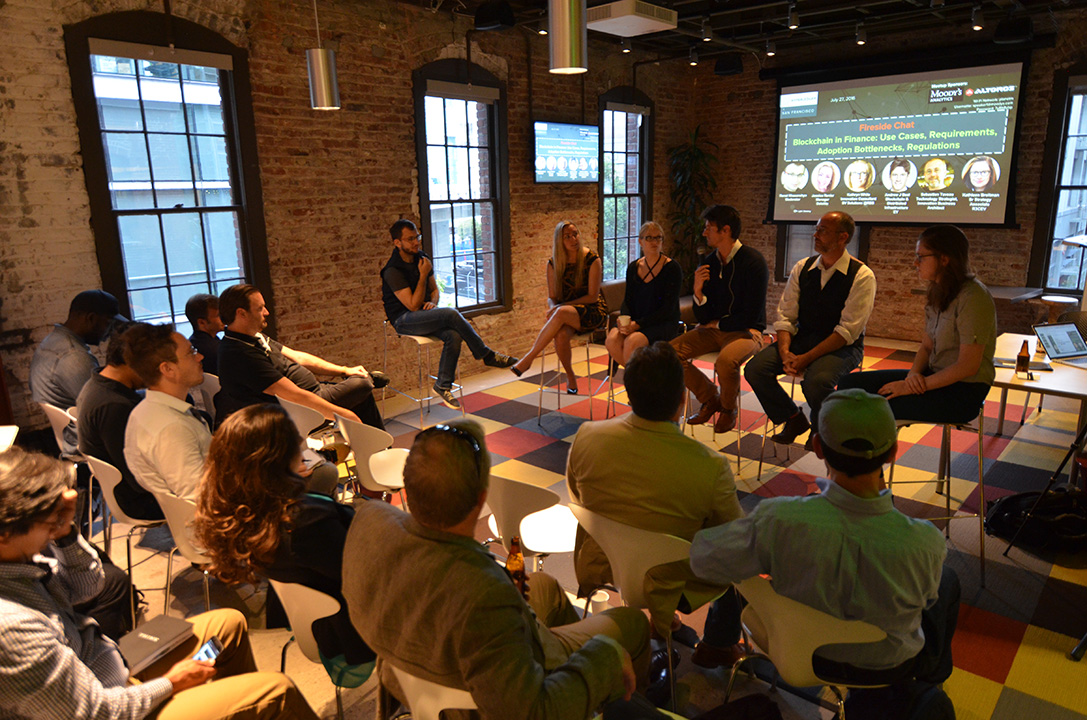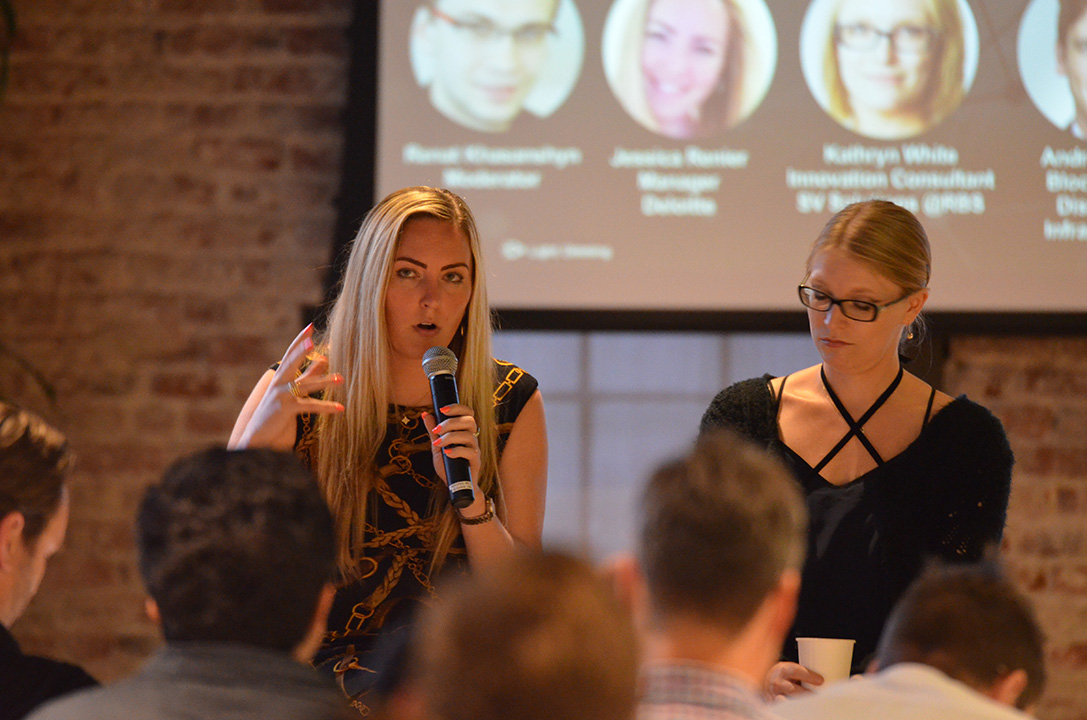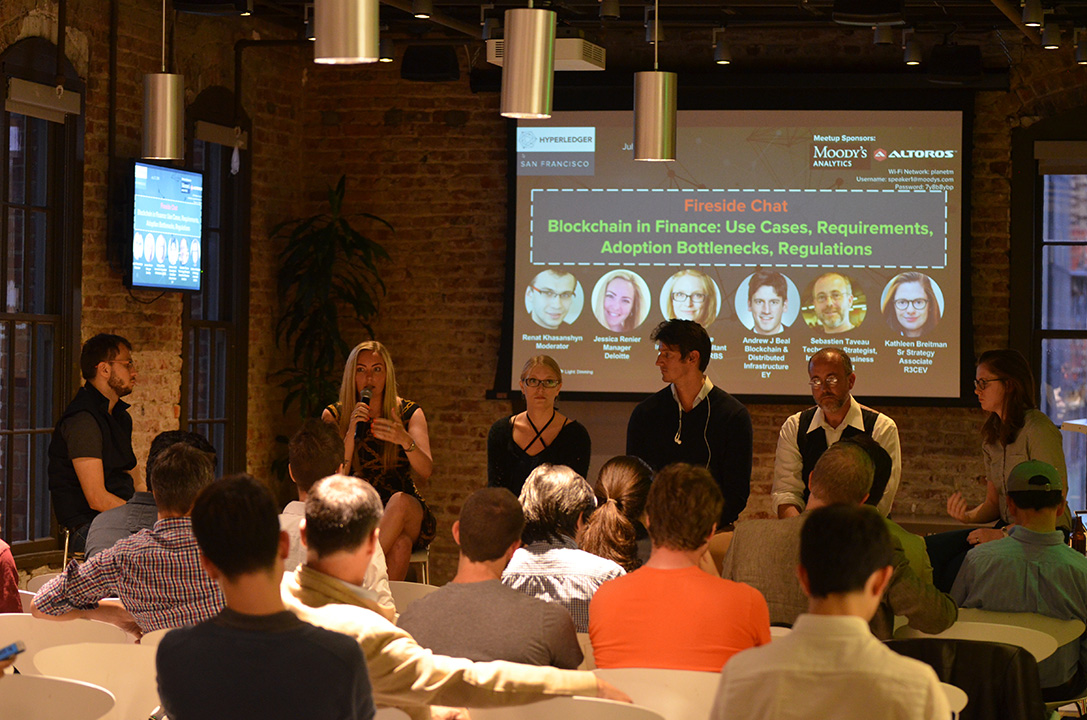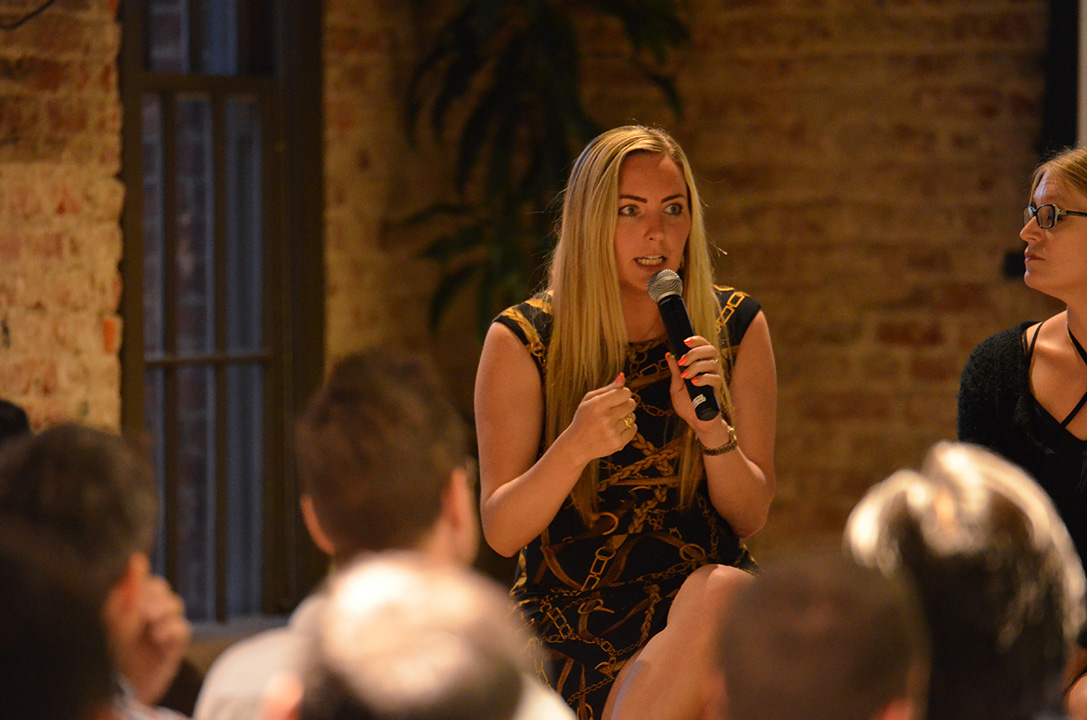Managing Risk and Building Trust for Blockchain in Finance
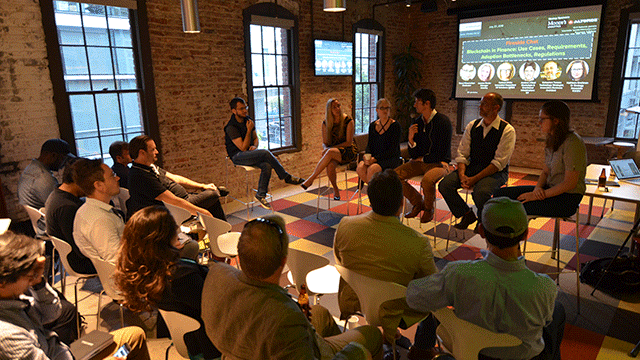
Some days I’m reminded of the Oklahoma Land Rush (although I wasn’t there) when I observe and participate in blockchain. Other days the experience is more like Waiting for Godot.
So, maybe this current blockchain epoch should be called Waiting for the Oklahoma Land Rush. I’ll check with my Hollywood friends to see if this idea can get greenlighted.
Meanwhile, we can all listen and learn from events like the recent Blockchain in Finance meetup in San Francisco, which was led by Renat Khasanshyn, CEO at Altoros.
Potential for blockchain
Renat did his best to tease out great potential use cases from five panel members, a group that included Jessica Reiner of Deloitte, Kathryn White of Royal Bank of Scotland (RBS), Andrew Beal of EY (Ernst & Young), an independent blockchain strategist Sebastien Taveu, and Kathleen Breitman of R3.
However, the panelists all agreed that these are still the very early days, and that we must be patient.
“I can tell you how the beast works from the inside and I can tell you it’s not pretty. Determining how we can improve business value and consumer value is not here yet.” —Sebastien Taveu
Sebastien mentioned potential areas of opportunity for blockchain, such as:
- moving money
- securities management risk
- data analytics
Kathleen remarked on the potential for blockchain within OTC markets and exotic swaps, but added that “we need a little bit of humility,” as today’s environment has very large manual processes and is heavily regulated. “It can cost US$20 million to create a new OTC derivative,” she noted.
Low-hanging fruits, such as customer loyalty programs, which don’t face the regulatory thicket found with transaction settlements, were also mentioned. Kathryn outlined an RBS program that she had also mentioned in a meetup in Palo Alto a few days prior to the San Francisco event.
She also thinks “there is a lot of cost-saving opportunity (within financial institutions). There are many ways of streamlining processes and improving back-end systems that are getting to be archaic. Cross-border payments and securities are an example, as is trade finance.”
Viewing and managing risk
Low risk emerged during the discussion as an obvious place to start. Andrew urged attendees to look to the areas “with the lowest amount of risk. Reward points programs (such as the RBS use case) are not too super-sexy and don’t offer a ton of collective value for a network of financial institutions,” he said, “but they do require cooperation within an institution and among a few institutions.”
“You must prove out the technology first (in a program such as this) before anyone will roll out a high-risk project in a production environment.” —Andrew Beal, EY
Picking up on this comment, Kathryn noted that “an international bank can start without needing a partner. Cross-institution cooperation within an institution is much easier to get going.” That brought up an insight from Jessica, who said that “something we think of high risk in the US may not be considered that way in a developing nation. So, it’s important to think of which countries you’re talking about when thinking internationally.”
The developing world
Differences among nations, particularly relating to viewing the developing world, was a major focus of the discussion. “Look in places where people don’t have any expanded identity form,” Kathryn said.
“I think there’s a great opportunity (for blockchain) for people off the gird.” —Kathleen Breitman
She added to this, noting the potential of:
- programmable money
- creating new financial assets
- creating new ways for people to finance themselves
“(In the developing world) how are you going to help me realize value?” Jessica asked. “Can you quantify it? Blockchain can be (very) consequential within economies at the nation-state level. There are national security and humanitarian impacts of a particular use case. Take identity and (imagine) guaranteeing listed intellectual property in a corrupt nation.”
Adoption requires trust and standardization
Meanwhile, there’s a clear need to establish trust among traditional managers and executives in the financial services industry, according to the panel.
“We must get people who are uncomfortable with blockchain to trust it. I think the psychological aspect of this is overlooked today.” —Jessica Reiner, Deloitte
Speaking specifically of regulators, Jessica said “they need to be able to look, touch, and feel it to get them to play with us and help us develop together.”
Kathryn said that efforts toward sharing standards “or at least using interlocking standards” is critical to take advantage of the “biggest opportunities, which are not within a single organization but are with consortia.”
“We’re building horizontally—stacking platforms and protocols next to each other—but once you have standards, you can start rapidly building vertically. That’s when the dynamic changes.”
—Andrew Beal, EY
Not enough education about blockchain
Sebastien also chimed in, noting that “people don’t understand a word about what you’re talking about today with blockchain. It’s still weird to them. So, we must start an education process at level zero, then move up. Once we all speak the same language, we can talk about standards and find ways to create use cases.” One big step is to ask, “What are some common modules of blockchain that you can put in the middle and have people understand? What is the common ground?”
Educating people is really important,” Jessica said. “In fact, do we even have the same definition of what a particular use case is? Take digital identity, for example. Is this a question of better securing the identity of currently transacting players or is it registering new people in the spirit of financial inclusion? Sometimes people butt heads without understanding they’re talking about two different things.”
Kathryn added that “this is not a problem confined to blockchain. How do you bring innovation into the organization in general? How do you get it out of the sand pit and play area? The financial services industry is hugely regulated and very risk-averse.”
“The key thing is to frame things in terms of solving a problem that everyone can understand.”
—Kathryn White, RBS
Sebastien noted that “advanced tech people are not the core people working in the banks.” This prompted Renat to ask, “How do we solve this gap between new tech and traditional bankers?”
Referring to the psychological dimension, he added, “people must take a leap of faith. But we must convince them it’s OK to let go.”
Want details? Watch the video!
Table of contents
|
Related reading
- The Royal Bank of Scotland Builds a Hyperledger Digital Wallet: the Lessons Learned
- Blockchain Adoption: Industry Requirements and the Role of Prototypes
- What Is the Future of Blockchain?
- Opinion: The Impact Blockchain Can Bring upon Finance and Banking and How It May Happen
- Blockchain Bottlenecks in Finance, Healthcare, and Insurance
About the panelists



